- Overview
- Trip Outline
- Trip Includes
- Trip Excludes
- Gallery
- Reviews
- Booking
- FAQ
DAY 01 JRO airport / Green Mountain Hotel
Welcome at JRO upon arrival
Transfer to the lodge c/o REUEL TRAVEL
Full day at leisure at the lodge.
A driver from REUEK TRAVEL will be waiting for you with a signboard outside the
Kilimanjaro International Airport building ready to transfer you direct to the lodge.
OVERNIGHT STAY GREEN MOUNTAIN HOTEL
DAY 02 Arusha / Tarangirei / Karatu
Morning departure to Tarangire NP for a full game drive
Picnic lunch in the park
Today you will be picked-up from you lodge drive direct to Tarangire NP
PM transfer to Karatu to your Camp for overnight
Tarangire National Park: The youngest of the parks in this area, Tarangire is primarily known for elephant, which gather here in prodigious numbers in the dry season, July thru January. But the park is more than a one trick wonder, it is a high quality wilderness area, especially in its virtually untouched southern sector. Tarangire may not have the scenic magnificence of Ngorongoro or the vast plains of Serengeti, but it is a prime slice of “honest Africa”, a really good bit of bush country with a wide range of flora and fauna, worthy of a visit at any time of year.
Safari: Silale Swamp: approx 5 to 7 hours: This is another area of particular interest over to the east of the park. There is often decent game over in this sector, amongst which the most talked about are the giant African pythons, which are often found hanging around in the trees on the edge of the swamps. It is quite a long drive and the further south you go the more pointless it can appear, but there are often herds of batchelor elephant and large numbers of buffalo to be found down here.
OVERNIGHT STAY HAVENNATURE SAFARI CAMP
DAY 03 Karatu / Serengeti / Camping
Morning departure to Serengeti NP with game drive en-route.
Picnic lunch en-route
Today you will be picked-up from you lodge drive direct to Serengeti NP
PM transfer to your Camp for overnight
Seronera : The central area of the Serengeti is known as the Seronera Valley. Located to the north of the main plains, at the junction between the northern and western corridors, the area is a broad sweeping valley of light woodland, smaller open grasslands and granite hills. The key feature of the area is the network of small rivers and pools, which provides sources of water all year round. This means that Seronera is not only able to maintain good populations of resident game all year round, but also that it acts as a safe haven for huge numbers of animals which migrate into the valley from less well watered areas during thR dry season, July thru November. At this time Seronera is said to have the highest density of lion and cheetah anywhere in Africa. Unfortunately, the valley also has high densities of human visitors, being the location for park headquarters, various research projects, two large lodges and numerous campsites. The smart way to do Seronera is therefore to raid it from smaller camp locations around the periphery, which gives you a chance to see a share of the game whilst avoiding the main vehicle concentrations.
OVERNIGHT STAY CAMPING
DAY 04 Full Day Game Drive Serengeti NP
Morning departure with picnic lunch boxes for full day safari.
Dinner and night at the Seronera Camping Site
Serengeti: Without doubt the mother of all the parks of East Africa, the Serengeti rarely fails to live up to its top billing any time of year. The great wildebeest and zebra migration is such a huge spectacle that it tends to become somewhat of a pre-occupation for many visitors. In fact the Serengeti has much more to offer besides. Even without the migration this would still be a great park and remains the primary focus of best safaris into the region.
In recent years the Serengeti has gained a reputation for being too busy. This is simply not the case. Whilst visitor numbers here are similar to that of the Maasai Mara (the portion of the park on the other side of the Kenyan border), it should be noted that the Serengeti is over six times the size. Visitor numbers are very much concentrated into a few specific areas, but if it is the wide open spaces these busy areas can be avoided. And if you really want the place to yourself, try coming off season, May and November are particularly good. Plan carefully and trip to the Serengeti remains to this day one of the greatest highlights of safari in Africa
OVERNIGHT STAY CAMPING
DAY 05 Serengeti/ Ngorongoro Ndutu
Morning departure for full day safari in the Ngorongoro Ndutu Area;
Picnic lunch in Ndutu
Dinner and night at Camping
Ndutu: Consisting mainly of sweeping grasslands, the Ndutu area in the northern part of the Ngorongoro Conservation Area joins the Serengeti. As such, it forms part of the annual migratory route of hundreds of thousands of wildebeest, zebra, antelope and their predators who come to graze and calve between November and March, depending on the rains. The forests around Lake Ndutu and small koppjes are also home to prolific resident wildlife. The Ndutu area forms the northwestern part of the Ngorongoro Conservation area, which covers an area of just over 8,000 km² and includes the spectacular Ngorongoro Crater, the Olduvai Gorge, forests, mountains and the vast plains of Ndutu stretching unfenced to Serengeti.
OVERNIGHT STAY CAMPING
DAY 06 Ndutu Ngorongoro Crater / Karatu
Morning departure for full day safari in the Ngorongoro Crater;
Picnic lunch in the crater
Ngorongoro Crater: With a diameter of over 20km, Ngorongoro is the world’s largest unfolded caldera and an amazing sight. Created two million years ago by the collapse of an enormous volcano, reckoned to be larger than Kilimanjaro, today the crater contains a microcosm of East Africa, with plains, soda lakes, forests, swamps and springs. Most of the larger mammal species are present, including elephant, black rhino, buffalo, hippo, lion and leopard. The only notable absentees are giraffe, which find the precipitous slopes of the crater rim too steep to negotiate. Game-viewing here is about as easy as it gets. The only downside is that visitor numbers can get very high during peak season, with vehicles clustering around major animal sightings and picnic spots. The crater remains a spectacular sight throughout the year and not to be missed, worthy of a half to one-day visit on most safaris.
OVERNIGHT STAY PANORAMA SAFARI CAMP
DAY 07 Karatu/ Eyasi / Mto Wa Mbu
Morning departure to Lake Eyasi to experience the Hadzabes & Datogas culture
Picnic lunch in Lake Eyasi
Afternoon transfer to Mto Wa Mbu for overnight
Lake Eyasi is situated at the southwestern end of the Ngorongoro Conservation Area between Great Rift Valley Eyasi escarpment and Kidero Mountains, just 133 km (95 miles) west of Lake Manyara. Lake Eyasi cover an area of about 1,050 square km (400 square miles) The lake is as all the other lakes in the Rift Valley a soda lake. Lake Eyasi, which has one principle spring, the Sibiti River, is enclosed with walls consisting of purple lava. The main attraction of Lake Eyasi are the Hadzabe Bushmen, the indigenous inhabitants and the last community of hunters and gatherers in Africa. Lake Eyasi is their homeland for over 10,000 years. They are still holding to their traditional way of life, hunting and gathering different kinds of fruits and honey.
OVERNIGHT STAY PANORAMA SAFARI CAMP
DAY 08 Mtu Wa Mbu/ Manyara NP / Arusha/JRO Airport
Morning departure for full day safari in the Manyara NP.
Picnic lunch during safari under acacia tree
Afternoon transfer to JRO for your flight back home
Lake Manyara National Park: This small park is sandwiched between the Rift Valley escarpment and the large soda lake from which the park takes its name. It is a pretty location, with a good range of game, most notably giraffe, elephant, baboon and the rarely seen tree-climbing lion. These days however the park suffers both from encroachment of the fast growing settlement and from heavy drive-by safari traffic in its northern sector throughout the day and in the central sector during the middle part of the day. The remote southern sector remains a decent area for safari.
End of services
------------------------------------------------------------------------------------------
The following segment is a safari through the Northern Parks of Tanzania, in a 4×4 safari vehicle, off into the bush. The night stops are fixed, but you are largely free to plan each day as it comes, to go at your own pace and set your own agenda. Your driver guide is able to contact our other vehicles out in the parks and you will be able to discuss game sightings with other guests in the camps, so together you can integrate the latest reports of game movements into your plans.
The details of this safari are shown below. The “safari vehicle and guide” lines include for a fully equipped safari 4×4 vehicle and a fully qualified and experienced safari guide. The price also includes fuel, insurances & taxes, radio & telephone communications, vehicle recovery or replacement in the event of breakdown and 1.5 litres of bottled water per person per day. Emergency and back-up support is provided by the control office in Arusha, so you are at liberty to communicate back to base should you need any assistance. The “accommodation” lines cover the lodge services, with inclusions as indicated. The “park fees” lines cover all the national park and village fees that we would expect you to encounter on this safari, all pre-paid except where specifically noted to the contrary. If you choose an exceptional routing then you may incur further park fees, so be sure to consider this with your driver guide when planning your days. Under normal circumstances we would anticipate that the only reasons you may require cash on this safari are for settling bar bills, paying tips & specifically excluded park fees (all as indicated) and for purchases of a personal nature, all of which can be settled in US dollars’ cash.
DAY 01 JRO airport / Green Mountain Hotel
Welcome at JRO upon arrival
Transfer to the lodge c/o REUEL TRAVEL
Full day at leisure at the lodge.
A driver from REUEK TRAVEL will be waiting for you with a signboard outside the
Kilimanjaro International Airport building ready to transfer you direct to the lodge.
OVERNIGHT STAY GREEN MOUNTAIN HOTEL
DAY 02 Arusha / Tarangirei / Karatu
Morning departure to Tarangire NP for a full game drive
Picnic lunch in the park
Today you will be picked-up from you lodge drive direct to Tarangire NP
PM transfer to Karatu to your Camp for overnight
Tarangire National Park: The youngest of the parks in this area, Tarangire is primarily known for elephant, which gather here in prodigious numbers in the dry season, July thru January. But the park is more than a one trick wonder, it is a high quality wilderness area, especially in its virtually untouched southern sector. Tarangire may not have the scenic magnificence of Ngorongoro or the vast plains of Serengeti, but it is a prime slice of “honest Africa”, a really good bit of bush country with a wide range of flora and fauna, worthy of a visit at any time of year.
Safari: Silale Swamp: approx 5 to 7 hours: This is another area of particular interest over to the east of the park. There is often decent game over in this sector, amongst which the most talked about are the giant African pythons, which are often found hanging around in the trees on the edge of the swamps. It is quite a long drive and the further south you go the more pointless it can appear, but there are often herds of batchelor elephant and large numbers of buffalo to be found down here.
OVERNIGHT STAY HAVENNATURE SAFARI CAMP
DAY 03 Karatu / Serengeti / Camping
Morning departure to Serengeti NP with game drive en-route.
Picnic lunch en-route
Today you will be picked-up from you lodge drive direct to Serengeti NP
PM transfer to your Camp for overnight
Seronera : The central area of the Serengeti is known as the Seronera Valley. Located to the north of the main plains, at the junction between the northern and western corridors, the area is a broad sweeping valley of light woodland, smaller open grasslands and granite hills. The key feature of the area is the network of small rivers and pools, which provides sources of water all year round. This means that Seronera is not only able to maintain good populations of resident game all year round, but also that it acts as a safe haven for huge numbers of animals which migrate into the valley from less well watered areas during thR dry season, July thru November. At this time Seronera is said to have the highest density of lion and cheetah anywhere in Africa. Unfortunately, the valley also has high densities of human visitors, being the location for park headquarters, various research projects, two large lodges and numerous campsites. The smart way to do Seronera is therefore to raid it from smaller camp locations around the periphery, which gives you a chance to see a share of the game whilst avoiding the main vehicle concentrations.
OVERNIGHT STAY CAMPING
DAY 04 Full Day Game Drive Serengeti NP
Morning departure with picnic lunch boxes for full day safari.
Dinner and night at the Seronera Camping Site
Serengeti: Without doubt the mother of all the parks of East Africa, the Serengeti rarely fails to live up to its top billing any time of year. The great wildebeest and zebra migration is such a huge spectacle that it tends to become somewhat of a pre-occupation for many visitors. In fact the Serengeti has much more to offer besides. Even without the migration this would still be a great park and remains the primary focus of best safaris into the region.
In recent years the Serengeti has gained a reputation for being too busy. This is simply not the case. Whilst visitor numbers here are similar to that of the Maasai Mara (the portion of the park on the other side of the Kenyan border), it should be noted that the Serengeti is over six times the size. Visitor numbers are very much concentrated into a few specific areas, but if it is the wide open spaces these busy areas can be avoided. And if you really want the place to yourself, try coming off season, May and November are particularly good. Plan carefully and trip to the Serengeti remains to this day one of the greatest highlights of safari in Africa
OVERNIGHT STAY CAMPING
DAY 05 Serengeti/ Ngorongoro Ndutu
Morning departure for full day safari in the Ngorongoro Ndutu Area;
Picnic lunch in Ndutu
Dinner and night at Camping
Ndutu: Consisting mainly of sweeping grasslands, the Ndutu area in the northern part of the Ngorongoro Conservation Area joins the Serengeti. As such, it forms part of the annual migratory route of hundreds of thousands of wildebeest, zebra, antelope and their predators who come to graze and calve between November and March, depending on the rains. The forests around Lake Ndutu and small koppjes are also home to prolific resident wildlife. The Ndutu area forms the northwestern part of the Ngorongoro Conservation area, which covers an area of just over 8,000 km² and includes the spectacular Ngorongoro Crater, the Olduvai Gorge, forests, mountains and the vast plains of Ndutu stretching unfenced to Serengeti.
OVERNIGHT STAY CAMPING
DAY 06 Ndutu Ngorongoro Crater / Karatu
Morning departure for full day safari in the Ngorongoro Crater;
Picnic lunch in the crater
Ngorongoro Crater: With a diameter of over 20km, Ngorongoro is the world’s largest unfolded caldera and an amazing sight. Created two million years ago by the collapse of an enormous volcano, reckoned to be larger than Kilimanjaro, today the crater contains a microcosm of East Africa, with plains, soda lakes, forests, swamps and springs. Most of the larger mammal species are present, including elephant, black rhino, buffalo, hippo, lion and leopard. The only notable absentees are giraffe, which find the precipitous slopes of the crater rim too steep to negotiate. Game-viewing here is about as easy as it gets. The only downside is that visitor numbers can get very high during peak season, with vehicles clustering around major animal sightings and picnic spots. The crater remains a spectacular sight throughout the year and not to be missed, worthy of a half to one-day visit on most safaris.
OVERNIGHT STAY PANORAMA SAFARI CAMP
DAY 07 Karatu/ Eyasi / Mto Wa Mbu
Morning departure to Lake Eyasi to experience the Hadzabes & Datogas culture
Picnic lunch in Lake Eyasi
Afternoon transfer to Mto Wa Mbu for overnight
Lake Eyasi is situated at the southwestern end of the Ngorongoro Conservation Area between Great Rift Valley Eyasi escarpment and Kidero Mountains, just 133 km (95 miles) west of Lake Manyara. Lake Eyasi cover an area of about 1,050 square km (400 square miles) The lake is as all the other lakes in the Rift Valley a soda lake. Lake Eyasi, which has one principle spring, the Sibiti River, is enclosed with walls consisting of purple lava. The main attraction of Lake Eyasi are the Hadzabe Bushmen, the indigenous inhabitants and the last community of hunters and gatherers in Africa. Lake Eyasi is their homeland for over 10,000 years. They are still holding to their traditional way of life, hunting and gathering different kinds of fruits and honey.
OVERNIGHT STAY PANORAMA SAFARI CAMP
DAY 08 Mtu Wa Mbu/ Manyara NP / Arusha/JRO Airport
Morning departure for full day safari in the Manyara NP.
Picnic lunch during safari under acacia tree
Afternoon transfer to JRO for your flight back home
Lake Manyara National Park: This small park is sandwiched between the Rift Valley escarpment and the large soda lake from which the park takes its name. It is a pretty location, with a good range of game, most notably giraffe, elephant, baboon and the rarely seen tree-climbing lion. These days however the park suffers both from encroachment of the fast growing settlement and from heavy drive-by safari traffic in its northern sector throughout the day and in the central sector during the middle part of the day. The remote southern sector remains a decent area for safari.
End of services
Itineraries
8-Days
Tanzania Budget Safari
- Pick-up & drop-off airport transfers
- Local English/Spanish/French speaking guide/driver
- 7 nights’ accommodation in Tanzania incl. full board
- Tarangire National Park – Over several hundred elephants
- Serengeti National Park – Search for” The Big 5”
- Ngorongoro Crater – Paradise to around 30,000 animals
- Lake Manyara National Park- Home to tree climbing lions and large herds of elephants
- Window seat in a four-wheel drive vehicle and a free bottle of water during safari tours
- Park fees
- Departure guarantee – the tour will take place regardless of the number of participants
No details found.
No Details Found
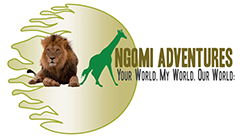

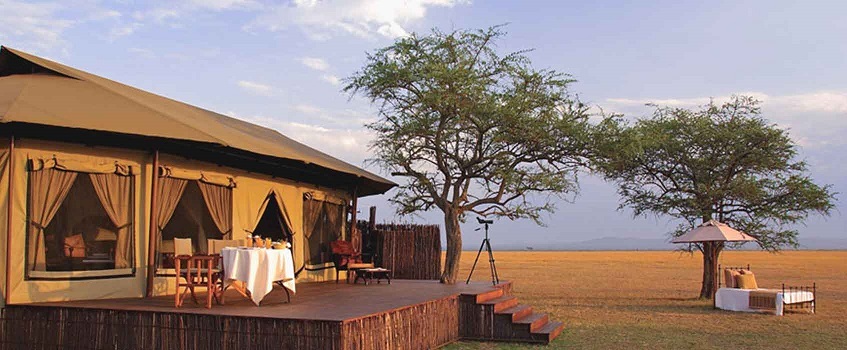
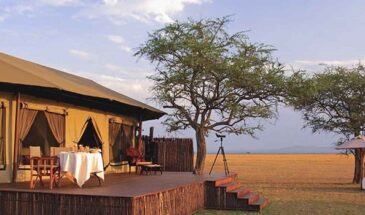
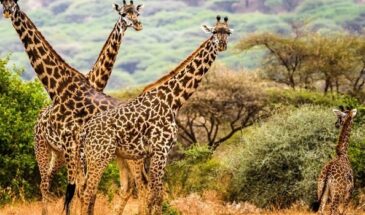
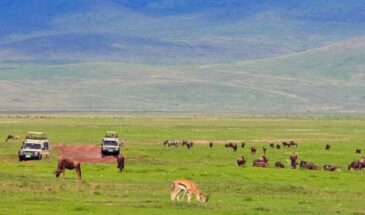
There are no reviews yet.